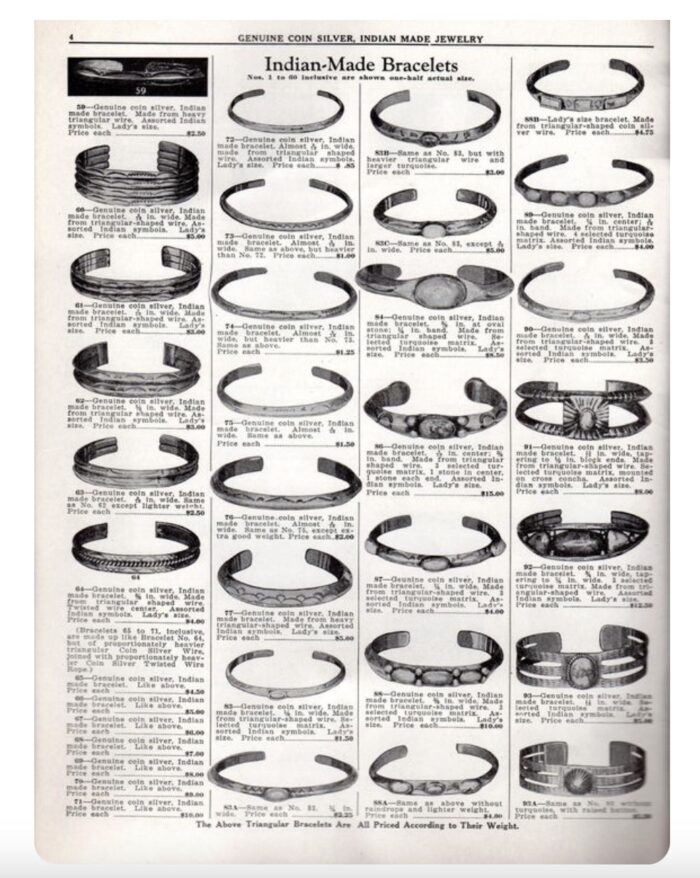When most people get a lousy meal at a restaurant they merely complain. But back in 1870s, Englishman Fred Harvey turned his crummy railroad dining experience into an empire that helped shape the modern restaurant industry, Southwest tourism, and Native American arts.
Albeit, Harvey had a little bit more restaurant experience than most. He started working in restaurants from the time he landed on United States soil at the age of 17 and continued to work in ones from New York to New Orleans. It wasn’t until he later worked for a railroad and was subjected to lousy and inconsistent depot fare that he got the idea that he could do better. And he did.
With a handshake agreement he began a train depot restaurant in Topeka, Kansas. Within a couple of years, he signed a contract with the Atchison, Topeka & Santa Fe Railway (AT&SF) for a trial depot restaurant.
Five years later, he had 17 depot Harvey House restaurants; he is credited with starting America’s first restaurant chain. He recruited hundreds of nubile single women to move West and work in his depot establishments which also included grand hotels and curio shops. He dominated the Southwestern tourism trade for a half a century.

Ironically, Harvey didn’t live to see the fruition of his investment in the souvenir jewelry trade or the resulting style that would bear his name. He died in 1901. What today is commonly called “Fred Harvey” jewelry or “Harvey era” jewelry wasn’t produced until after his death. It was his heirs and protégé who oversaw most of the jewelry on the resell market today.
Harvey’s daughter, Minnie, and employee Herman Schweizer masterminded selling Native American wares in the curio shops. Minnie’s husband and Schweizer ran the “Fred Harvey Indian Department,” which procured Native American handwoven rugs and blankets, pottery, and jewelry sold in Harvey shops. Some of the jewelry items were traditional heavy, well-crafted pieces, but the company soon discovered that tourists from the Eastern United States preferred lighter weight, daintier jewelry. Silver cuff bracelets with a touch of turquoise and stamped with an array of Southwestern symbols were particularly popular.

It’s important to note that the Harvey Company never produced the distinctive Southwestern jewelry it sold. Rather it created Southwestern “Indian-looking” designs and commissioned manufacturers to produce the jewelry. The Harvey Company even supplied some manufacturers with pre-cut Nevada and Colorado turquoise and pre-weighed silver.
Manufacturers included Bell Indian Trading Post Co., Maisel’s Indian Trading Post, Vaughn’s, Silver Arrow Products, Pacific Jewelry Co. and several others. Many manufacturers made a show of employing Native American craftsman although the jewelry was in part machine made and there is little confirmation that all craftsmen were tribal members. In fact some manufacturers were located far from tribal lands. Sheets of silver were often pre-cut and machine-stamped and later finished by hand using pre-cut stones.

Popular symbols included on this souvenir jewelry included: Thunderbirds, snakes, arrowheads, arrows, teepees, and a long list of of other pictographs. Thunderbirds were a particular favorite with Schweizer embellishing the meaning to “sacred bearer of happiness unlimited.” Pre-World War II pieces sometimes bore the whirling logs symbol, which was actually rooted in Southwest Indian lore as a good luck symbol. But that symbol was discontinued due to people confusing it with the Swastika.

For decades the jewelry was more aptly referred to as railroad jewelry; it wasn’t until the era of Ebay that it began to be commonly referred to as Fred Harvey jewelry.
In the end, Fred Harvey jewelry is far more Anglo than Native American. It reflects an imagined and romanticized view of the Southwest during the early 20th Century rather than actual Native American culture.
Author Louise Lincoln wrote in her book Southwest Indian Silver from the Doneghy that Harvey jewelry was “the first systematic exploitation of outside markets for Indian jewelry.” Others point out that the Fred Harvey Company helped create a wider awareness of Native American culture and a larger market for authentic Native American jewelry.
Regardless, the jewelry represents a historical perspective and is wildly popular with collectors.

Great article! Very interested in Fred Harvey Jewelry now.